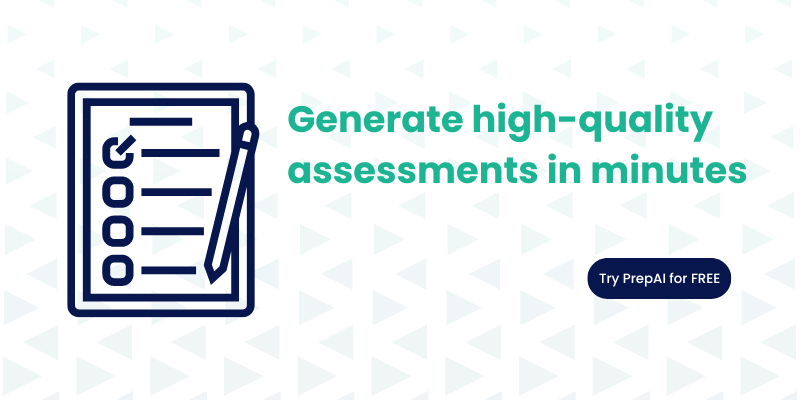In today’s rapidly changing world, traditional learning is no longer enough to prepare students for ultimate success. Students need to develop critical thinking, problem-solving, and creativity skills, collectively known as Higher Order Thinking Skills (HOTS) to tackle real-world problems. It is the ability to analyze, evaluate, synthesize, and apply knowledge to real-world situations, making it a vital component of modern education.
HOTS play a crucial role in helping students become independent learners, capable of navigating complex challenges and making informed decisions. It empowers students to think critically, question assumptions, and solve problems effectively. These skills are not only important for academic success but also for personal and professional growth.
To facilitate the development of HOTS in students, educators need effective tools that can generate thought-provoking questions. This is where solutions like PrepAI come in. It is an innovative artificial intelligence (AI) powered question and answer generator tool that can come up with high-quality questions to promote HOTS in students. With its advanced algorithms and natural language processing capabilities, PrepAI can generate a wide range of question types, including problem-solving, analysis, and evaluation questions.
What are Higher Order Thinking Skills (HOTS)?
HOTS is the cognitive process that involves critical thinking, problem-solving, analysis, evaluation, synthesis, and creativity. HOTS goes beyond the simple recall and comprehension of information, which are considered lower-order thinking skills (LOTS) according to Bloom’s Taxonomy, a widely recognized framework for categorizing cognitive skills.
Bloom’s Taxonomy classifies cognitive skills into six levels, with LOTS at the lower end and HOTS at the higher end. LOTS include activities such as remembering facts and understanding concepts. On the other hand, Bloom’s Taxonomy Higher Order Thinking involves more complex mental processes, such as analyzing information, evaluating evidence, synthesizing ideas from different sources, and creating new solutions or perspectives.
Higher-order thinking skills questions are essential for developing critical thinking, problem-solving, and creativity skills, which are highly valued in today’s world. They enable students to engage with information at a deeper level, think critically about different perspectives, and apply their knowledge to real-world situations. HOTS also foster creativity by encouraging students to generate new ideas, think outside the box, and develop innovative solutions to complex problems.
What is PrepAI?
PrepAI is a cutting-edge AI question generator that helps educators create high-quality educational content, including questions that promote HOTS. It is a user-friendly online test maker that leverages advanced algorithms and natural language processing capabilities to generate a wide range of questions that are tailored to meet specific learning objectives.
PrepAI simplifies the process of creating thought-provoking questions by automating the process. It takes into account the context, content, and desired question type to produce questions that are challenging, engaging, and aligned with the level of cognitive complexity required for HOTS. PrepAI can be used across various subject areas, making it a versatile tool for educators in different disciplines.
Using PrepAI to Generate HOTS Questions
PrepAI is a question generator for teachers that help generate HOTS questions quickly and efficiently. Here’s a step-by-step guide on how to use PrepAI to generate HOTS questions:
Step 1: Input Content

Once you log in or create a new account, you can start with a free trial. You will be asked to add a topic and relevant content. This can be done from multiple sources. Start by adding the relevant keywords in the content related to the topic or subject for which you want to generate HOTS questions.
These keywords can be related to specific concepts, themes, or content that you want the questions to focus on. For example, if you’re teaching a history lesson on the American Revolution, you can input keywords like “American Revolution,” “colonial history,” “revolutionary war,” etc.
Step 2: Select Appropriate Parameters
PrepAI allows you to customize the parameters for generating questions. You can select the level of difficulty, the question type (e.g., problem-solving, analysis, evaluation, etc.), and the number of questions you want to generate. For HOTS questions, you can select application and analysis as the choices.
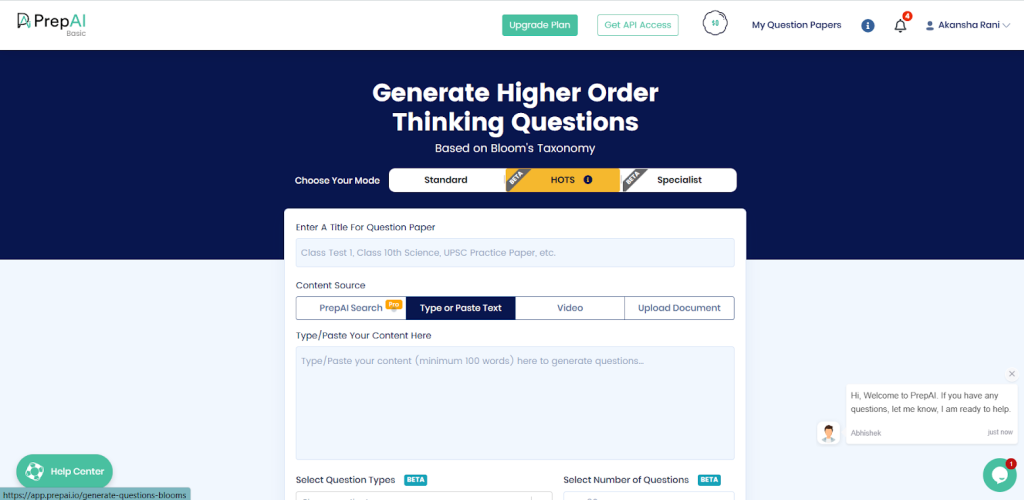
Step 3: Customize Question Types
Depending on your desired learning outcomes and instructional goals, you can customize the question types that you want to generate using PrepAI. For example, if you want to focus on problem-solving skills, you can select parameters that generate questions that require students to analyze and solve complex problems related to the topic.
If you want to emphasize analysis skills, you can choose parameters that generate questions that require students to critically analyze information, draw conclusions, and make inferences. Similarly, for evaluation skills, you can select parameters that generate questions that require students to evaluate different perspectives, arguments, or evidence related to the topic.
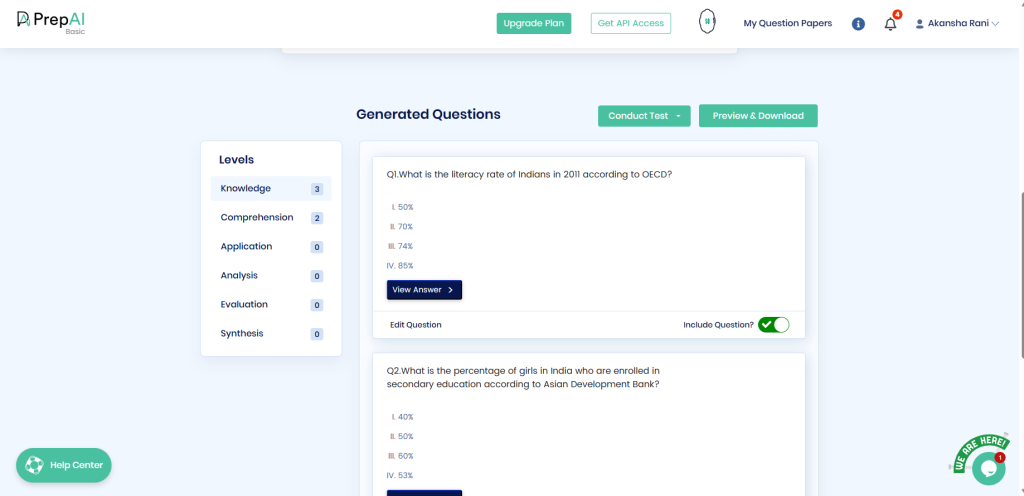
Step 4: Generate HOTS Questions
Once you have added the relevant content and customized the parameters, click on the generate button to generate a variety of HOTS questions related to the topic or subject. PrepAI will use its advanced algorithms and natural language processing capabilities to generate questions that align with the selected parameters and keywords.
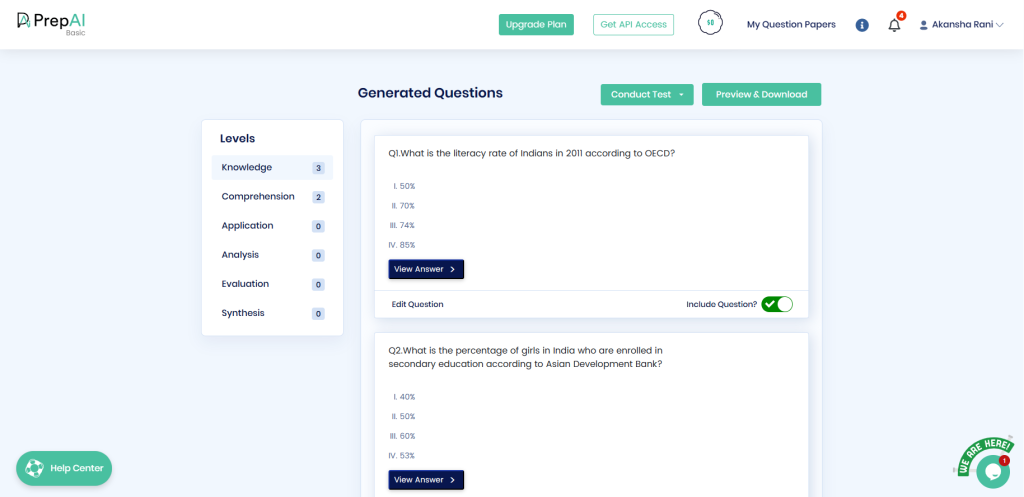
Step 5: Review and Edit Questions
After generating the questions, you can review them and make any necessary edits or modifications to align them with your specific instructional goals or learning outcomes. You can add or remove questions, edit the wording, or adjust the level of difficulty as needed to suit the needs of your students.
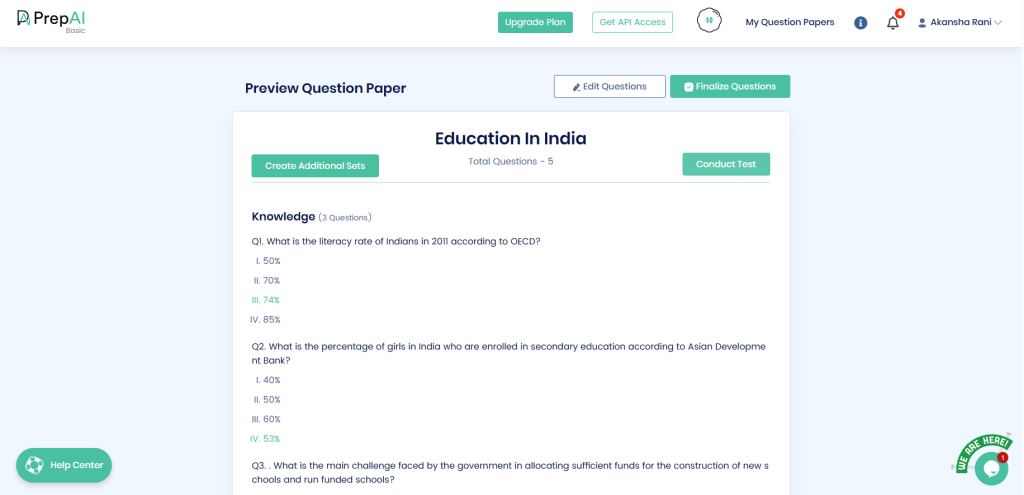
Step 6: Utilize the Generated Questions
Once you have reviewed and edited the generated questions, you can use them in your instructional materials, assessments, or other learning activities. The variety of question types generated by PrepAI, such as problem-solving, analysis, and evaluation questions, can provide students with opportunities to engage in higher-order thinking and develop critical thinking, problem-solving, and creativity skills.
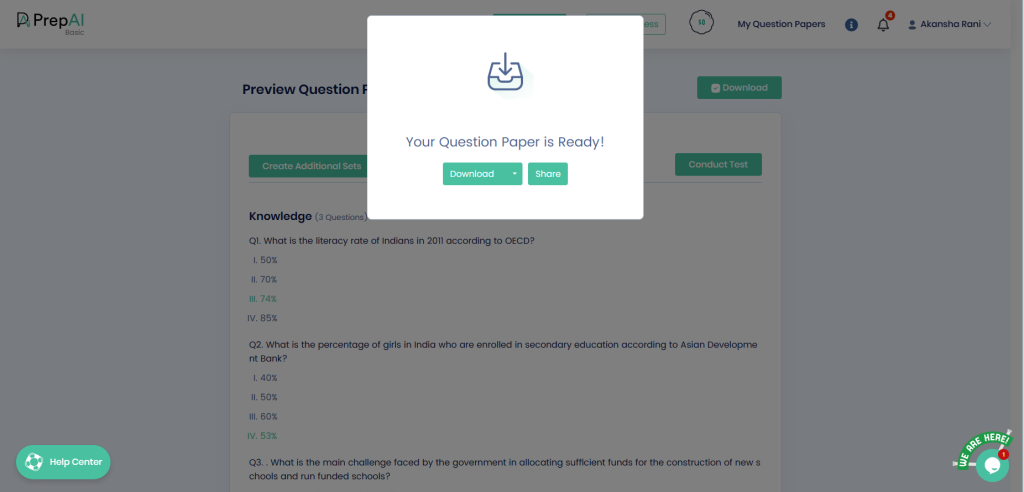
Benefits of Using HOTS Questions in Education
HOTS assessment is a powerful tool for educators to promote critical thinking, analysis, and application of knowledge in their students. Here are some key benefits of incorporating HOTS questions in education:
1. Encourages Critical Thinking
Higher Order Thinking Skills questions require students to evaluate and analyze information from different perspectives, question assumptions, and apply logical reasoning to arrive at informed conclusions. HOTS in education encourage students to think critically, develop their own opinions, and make evidence-based decisions. HOTS questions challenge students to go beyond surface-level understanding and engage in deeper analysis, leading to a more thorough understanding of the content.
2. Promotes Deep Learning
HOTS questions encourage students to engage with the content at a higher cognitive level, which promotes deep learning. Deep learning involves constructing meaning, connecting new information with prior knowledge, and making meaningful connections between different concepts. HOTS questions require students to go beyond memorization and actively engage in understanding and applying the information, leading to long-term retention and meaningful learning.
3. Enhances Problem-Solving Skills
HOTS questions often present students with complex problems or scenarios that require them to apply their knowledge and skills to find solutions. This promotes problem-solving skills, as students need to think critically, analyze information, and generate creative solutions. Problem-solving is a crucial skill in real-life scenarios, such as in the workplace or in everyday decision-making, making HOTS questions relevant and applicable to students’ future success.
4. Fosters Creativity
HOTS questions often require students to think creatively, generate new ideas, and come up with innovative solutions. This encourages students to think outside the box, explore different perspectives, and develop their creativity skills. Creativity is a valuable skill in various fields, including arts, sciences, and business, and incorporating HOTS questions in education helps students develop this important skill.
5. Prepares Students for Real-Life Scenarios
HOTS skills are not only important in academic settings but also in real-life scenarios. For example, in professional settings, employees are often required to think critically, solve complex problems, analyze information, and be creative in finding solutions. By incorporating HOTS questions in education, students are better prepared to face real-life challenges and succeed in their future endeavors.
Tips for Using HOTS Questions in the Classroom
Incorporating HOTS questions in the classroom can greatly enhance student engagement and promote critical thinking. Here are some tips for effectively using HOTS questions in your lessons:
Foster Discussion and Debate
HOTS questions are meant to stimulate critical thinking and encourage students to engage in discussions and debates. Create opportunities for students to discuss and debate their answers, share their perspectives, and provide evidence to support their arguments. Encourage students to ask questions and challenge each other’s ideas, fostering a classroom culture that values critical thinking and respectful debate.
Encourage Evidence-Based Reasoning
HOTS questions often require students to analyze information, evaluate evidence, and make reasoned judgments. Encourage students to provide evidence to support their answers and reasoning. Teach them how to critically evaluate sources of information and use evidence to support their arguments. This will help students develop important skills in evaluating information and forming well-supported opinions.
Use Scaffolding Techniques
HOTS questions may challenge students, and some students may struggle to answer them. Use scaffolding techniques such as providing hints, modeling the thought process, and offering additional support to help students develop their critical thinking skills. Gradually reduce the scaffolding as students become more proficient in their critical thinking abilities.
Create a Safe and Inclusive Classroom Environment
HOTS questions may involve controversial or sensitive topics. Create a safe and inclusive classroom environment where all students feel comfortable expressing their opinions, even if they differ from others. Encourage respectful dialogue and diverse perspectives, and facilitate discussions that promote critical thinking and open-mindedness.
Incorporating Technology Tools
Technology tools, such as PrepAI, can be valuable resources for generating HOTS questions. Use these tools to generate a wide range of question types and formats, and customize them to suit your instructional goals. Incorporate technology tools as part of your instructional strategies to enhance student engagement and promote critical thinking skills.
How to Get Started?
As educators, it is important to incorporate HOTS questions in our teaching to promote higher-order thinking skills in students. By using PrepAI to generate HOTS questions, we can provide students with challenging and thought-provoking questions that go beyond simple recall of information, helping them develop the cognitive abilities necessary for success in today’s complex world.
So, let’s embrace the power of HOTS questions and utilize tools like PrepAI to enhance our teaching and promote higher-order thinking skills in our students. Together, we can prepare them for the challenges and opportunities of the future.



